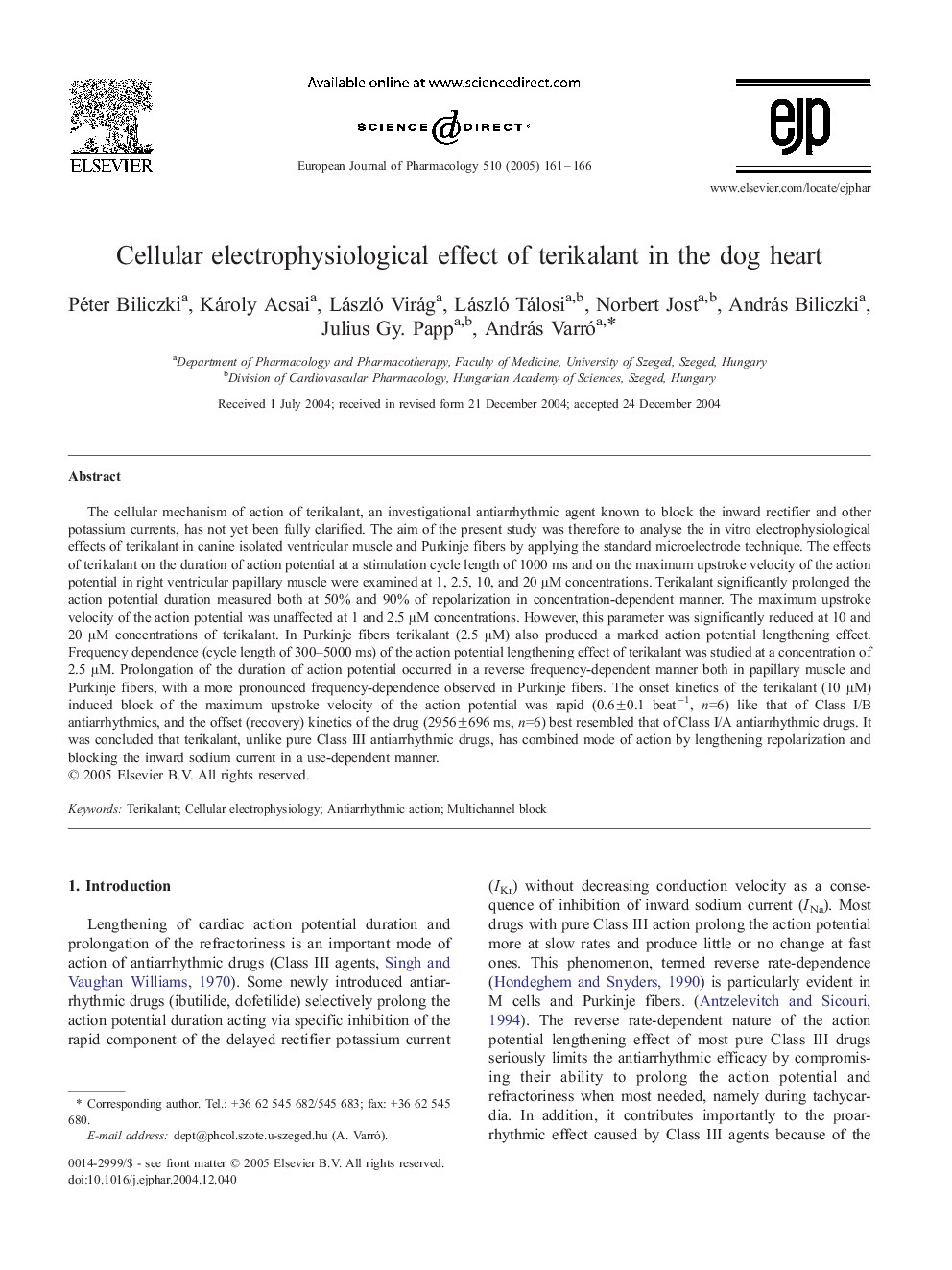| کد مقاله | کد نشریه | سال انتشار | مقاله انگلیسی | نسخه تمام متن |
|---|---|---|---|---|
| 9921450 | 1559222 | 2005 | 6 صفحه PDF | دانلود رایگان |
عنوان انگلیسی مقاله ISI
Cellular electrophysiological effect of terikalant in the dog heart
دانلود مقاله + سفارش ترجمه
دانلود مقاله ISI انگلیسی
رایگان برای ایرانیان
موضوعات مرتبط
علوم زیستی و بیوفناوری
علم عصب شناسی
علوم اعصاب سلولی و مولکولی
پیش نمایش صفحه اول مقاله

چکیده انگلیسی
The cellular mechanism of action of terikalant, an investigational antiarrhythmic agent known to block the inward rectifier and other potassium currents, has not yet been fully clarified. The aim of the present study was therefore to analyse the in vitro electrophysiological effects of terikalant in canine isolated ventricular muscle and Purkinje fibers by applying the standard microelectrode technique. The effects of terikalant on the duration of action potential at a stimulation cycle length of 1000 ms and on the maximum upstroke velocity of the action potential in right ventricular papillary muscle were examined at 1, 2.5, 10, and 20 μM concentrations. Terikalant significantly prolonged the action potential duration measured both at 50% and 90% of repolarization in concentration-dependent manner. The maximum upstroke velocity of the action potential was unaffected at 1 and 2.5 μM concentrations. However, this parameter was significantly reduced at 10 and 20 μM concentrations of terikalant. In Purkinje fibers terikalant (2.5 μM) also produced a marked action potential lengthening effect. Frequency dependence (cycle length of 300-5000 ms) of the action potential lengthening effect of terikalant was studied at a concentration of 2.5 μM. Prolongation of the duration of action potential occurred in a reverse frequency-dependent manner both in papillary muscle and Purkinje fibers, with a more pronounced frequency-dependence observed in Purkinje fibers. The onset kinetics of the terikalant (10 μM) induced block of the maximum upstroke velocity of the action potential was rapid (0.6±0.1 beatâ1, n=6) like that of Class I/B antiarrhythmics, and the offset (recovery) kinetics of the drug (2956±696 ms, n=6) best resembled that of Class I/A antiarrhythmic drugs. It was concluded that terikalant, unlike pure Class III antiarrhythmic drugs, has combined mode of action by lengthening repolarization and blocking the inward sodium current in a use-dependent manner.
ناشر
Database: Elsevier - ScienceDirect (ساینس دایرکت)
Journal: European Journal of Pharmacology - Volume 510, Issue 3, 14 March 2005, Pages 161-166
Journal: European Journal of Pharmacology - Volume 510, Issue 3, 14 March 2005, Pages 161-166
نویسندگان
Péter Biliczki, Károly Acsai, László Virág, László Tálosi, Norbert Jost, András Biliczki, Julius Gy. Papp, András Varró,